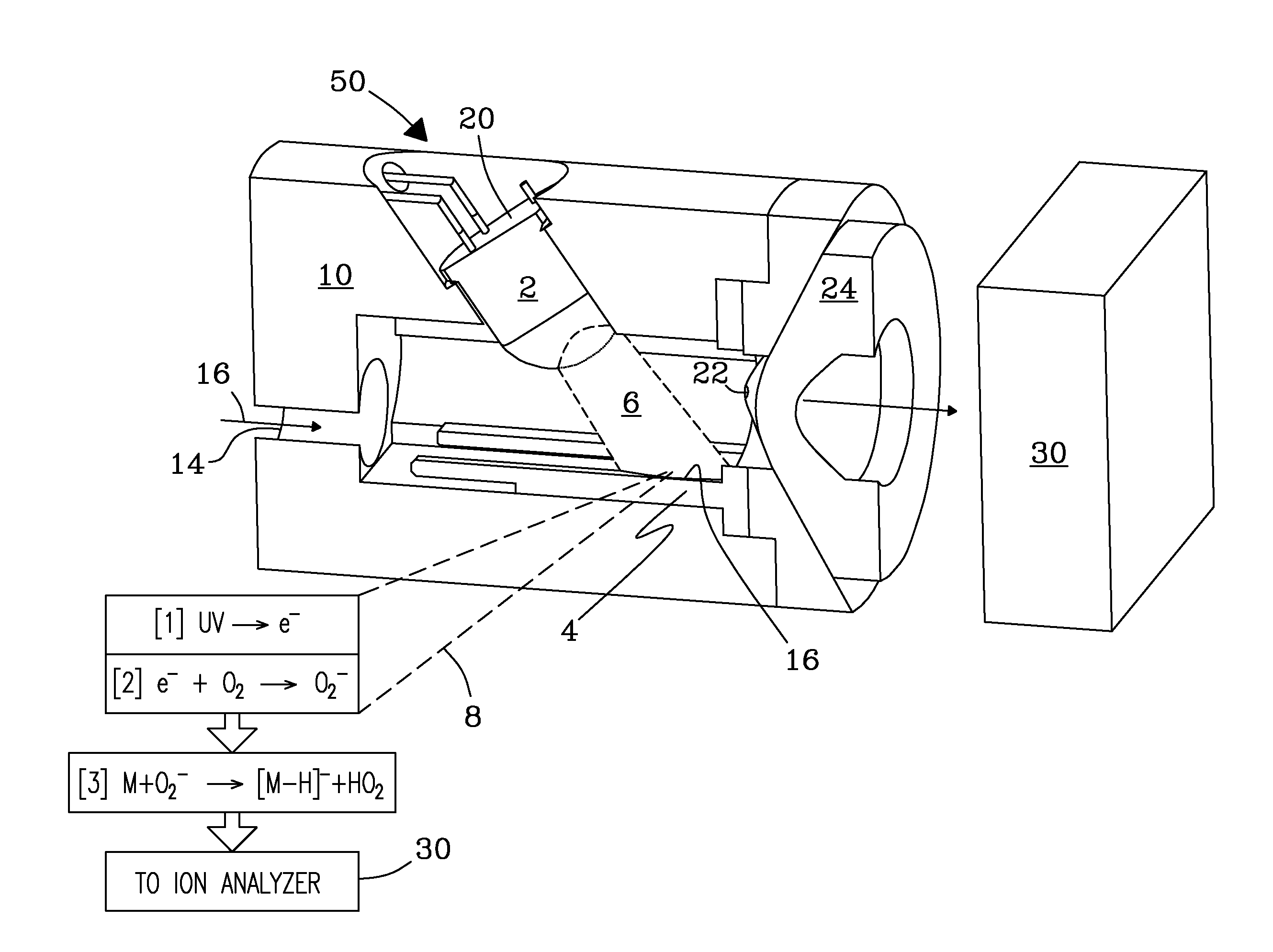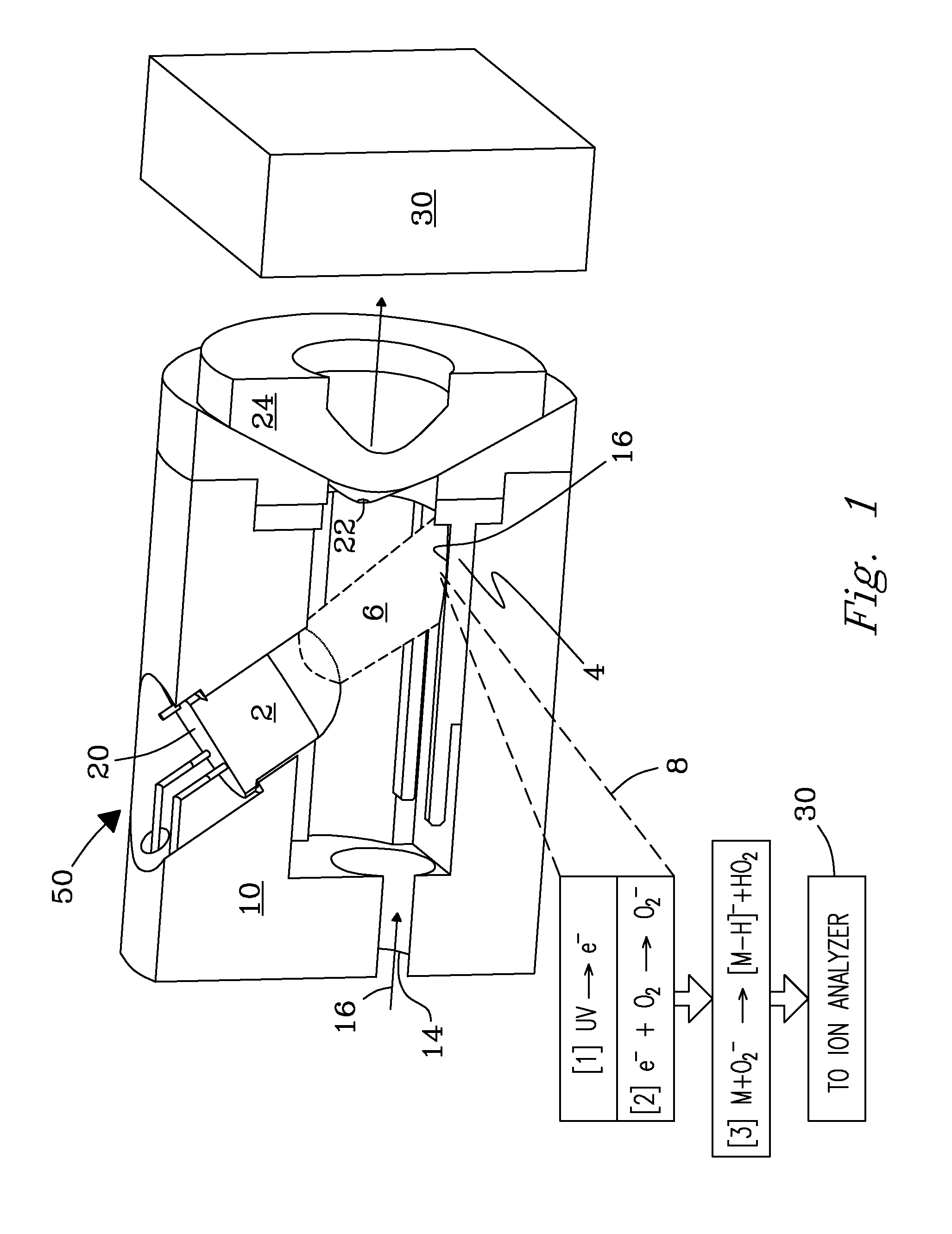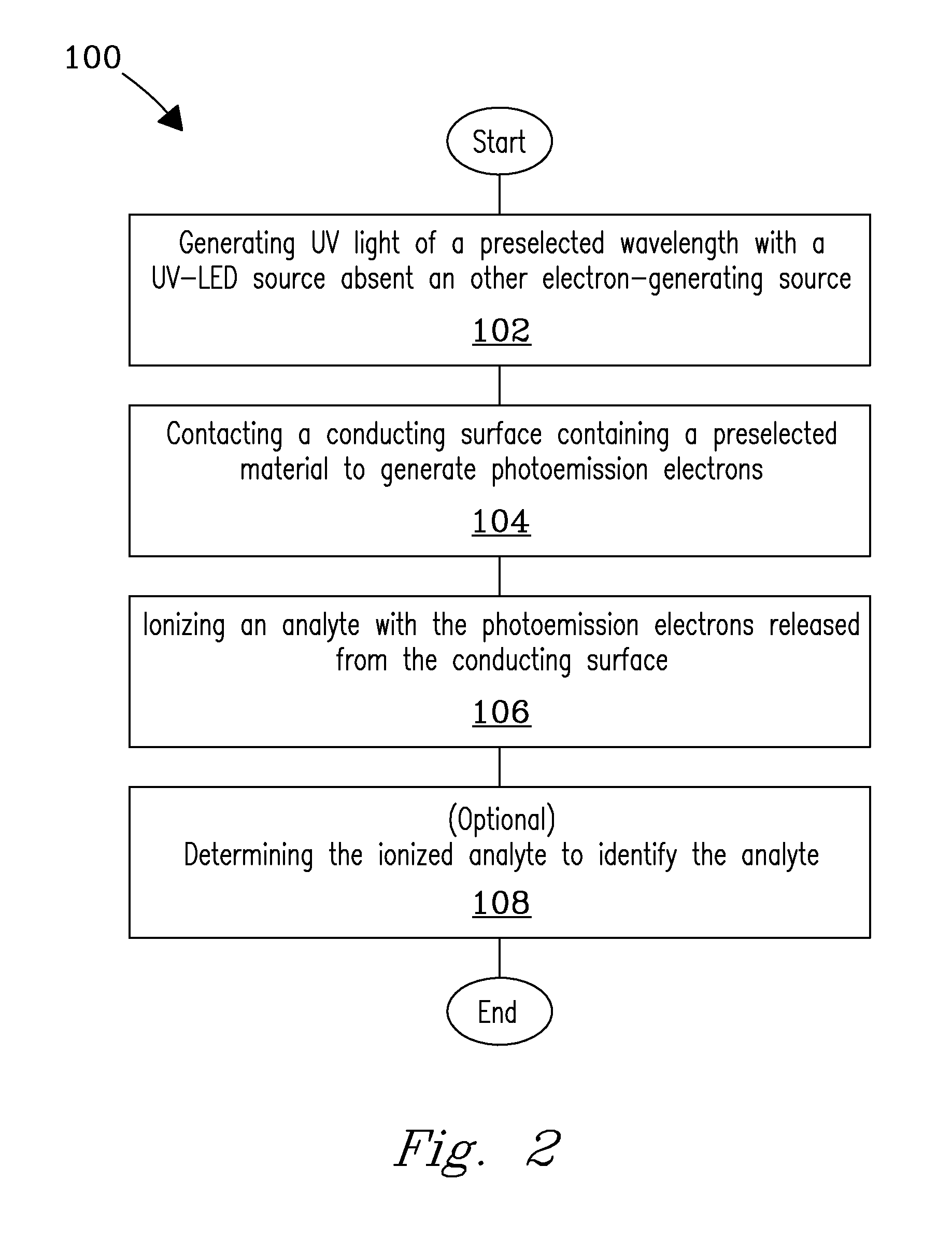Uv-led ionization source and process for low energy photoemission ionization
a low-energy photoemission and ionization technology, applied in the field of ionization sources and systems, can solve the problems of inability of uv-leds to directly photo-ionize organic or atmospheric components, and insufficient light from a uv led, so as to reduce the complexity and cost of ion sources, reduce pressure, and the effect of robust uv-led sources
- Summary
- Abstract
- Description
- Claims
- Application Information
AI Technical Summary
Benefits of technology
Problems solved by technology
Method used
Image
Examples
example 1
Background Tests
[0047]Ambient air was analyzed using a UV-LED source (FIG. 1) with the UV-LED “on” or “off” that involves monitoring and sampling of negative ions. A mass analyzer (MS) was set to monitor total ion count (TIC) from m / z 10 to m / z 400. UV-LED source was switched “on” by shining UV light onto a metal foil positioned, e.g., 0.5 cm from MS inlet, or “off”. A voltage of −500V was applied to the selected metal foil, and a voltage of −10V was applied to the cone surface.
example 2
Background Ions from Oxidized Aluminum Conducting Surface
[0048]In one test, background ions were generated in air at ambient temperature using a single UV-LED illuminating the conducting surface composed of oxidized aluminum. A background ion mixture resulting from UV light (280 nm) from a UV-LED source striking the conducting surface located near the sample cone was determined with an API 5000 atmospheric-sampling mass analyzer situated adjacent to UV-LED source. The sample cone was set to a potential of −7V. UV light from the UV-LED was set to strike the sample cone ˜0.5 cm from the MS inlet. The oxidized surface with the thin oxide film substantially lowered the work function of the material to 4.0 eV (compared to 4.23 eV for a non-oxidized aluminum), which occurs naturally at atmospheric pressure in room air. Work function for generation of photoelectrons on the non-oxidized surface is at the minimum necessary value to permit photoemission generation when exposed to 280 nm UV li...
example 3
Background Ions from Stainless Steel Conducting Surface
[0049]In another test, background ions were generated in sufficient quantity in air when a single UV-LED illuminated a conducting surface made of oxidized stainless steel at ambient temperature. Background ion mixture resulting from UV light (280 nm) from a UV-LED source striking a conducting surface located near a sample cone was determined with an API 5000 atmospheric-sampling mass analyzer situated adjacent to UV-LED source. Background ion mixture resulting from UV light (280 nm) striking a stainless steel metal surface was determined using an API 5000 atmospheric-sampling mass analyzer coupled to the UV-LED source. The sample cone was set to a potential of −7V. UV light from the UV-LED was set to strike the sample cone −0.5 cm from the MS inlet. UV light from UV-LED source was set to strike the sample cone just below the inlet to the mass analyzer. The stainless steel metal surface has a work function that is just sufficient...
PUM
 Login to View More
Login to View More Abstract
Description
Claims
Application Information
 Login to View More
Login to View More - R&D
- Intellectual Property
- Life Sciences
- Materials
- Tech Scout
- Unparalleled Data Quality
- Higher Quality Content
- 60% Fewer Hallucinations
Browse by: Latest US Patents, China's latest patents, Technical Efficacy Thesaurus, Application Domain, Technology Topic, Popular Technical Reports.
© 2025 PatSnap. All rights reserved.Legal|Privacy policy|Modern Slavery Act Transparency Statement|Sitemap|About US| Contact US: help@patsnap.com



